Category: Science
- Home
- /
- Shop
- /
- By Subject
- /
- Science
- /
- Page 2
Showing 21–40 of 344 resultsSorted by latest
-
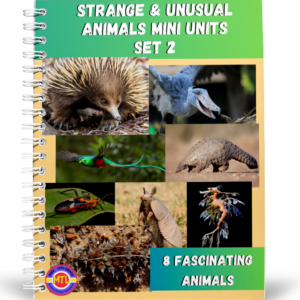 $8.00Buy Now
$8.00Buy NowStudents will love learning about 8 different ‘strange and unusual’ animals in this set of eight mini units! In each mini unit, students will learn all about one very uncommon animal, what they look like, where they live (habitat and location), what they eat, interesting facts, interactions with humans, if they are kept as pets / have been domesticated and more!
Animals in this set:
– Assassin Bug
– Moloch
– Quetzal
– Sea Dragon
– Shoebill Stork
– Armadillo
– Pangolin
– EchidnaPages include colorful photos and will keep students interested as they learn about each animal. After reading, students will have 2 notebooking pages to complete about each animal.
Also included: Taking it Further – Additional suggestions for building additional knowledge and fun extended activities!
Also, check out…Strange and Unusual Animals | Set 1
-
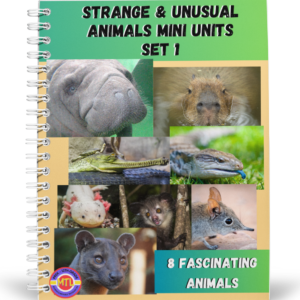 $8.00Buy Now
$8.00Buy NowStudents will love learning about 8 different ‘strange and unusual’ animals in this set of eight mini units! In each mini unit, students will learn all about one very uncommon animal, what they look like, where they live (habitat and location), what they eat, interesting facts, interactions with humans, if they are kept as pets / have been domesticated and more!
Animals in this set:
– Gharial
– Dugong
– Capybara
– Blue-Tongued Skink
– Axolotl
– Aye Aye
– Elephant Shrew
– FossaPages include colorful photos and will keep students interested as they learn about each animal. After reading, students will have 2 notebooking pages to complete about each animal.
Also included: Taking it Further – Additional suggestions for building additional knowledge and fun extended activities!
Check out: Strange and Unusual Animals | Set 2
-
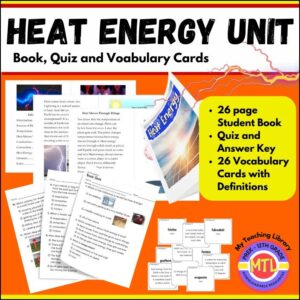 $3.25Buy Now
$3.25Buy NowThis unit introduces several important concepts about heat energy including heat sources, temperature measurement, controlling heat through insulation and the importance of heat energy for living things. This unit will also explain how heat is transferred including convection, conduction and radiation.
The resource includes:
- – Student book
- – Quiz with answer key
- – Vocabulary cards with definitions
-
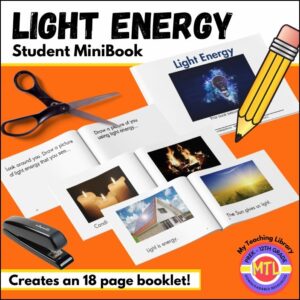 $1.75Buy Now
$1.75Buy NowStudents will create an 18 page mini-book as they learn about different sources of light energy!
-
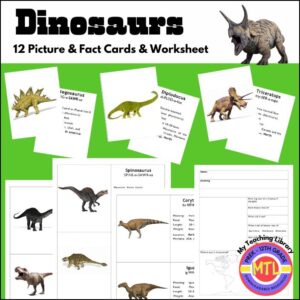 $2.50Buy Now
$2.50Buy NowStudying dinosaurs? Here are 12 picture and fact cards plus a worksheet for students to use as the report on each dinosaur!
Dinosaurs included: Spinosaurus, Ankylosaurus, Stegosaurus, Pteranodon, Velociraptor, Triceratops, Corythosaurus, Iguanodon, Diplodocus, Dimetrodon (not a true dinosaur but often covered in textbooks), Apatosaurus, Tyrannosaurus. -
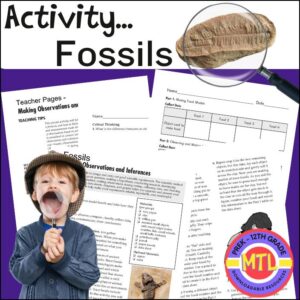 $1.25Buy Now
$1.25Buy NowStudying fossils? With this fun activity, students will create a variety of ‘fossils’ while learning how to make observations, inferences and how to distinguish between the two!
Includes- Student and teacher pages:
– Student “how to” activity pages
– Student data worksheet
– Student critical thinking worksheet
– Teacher pages and answer keys -
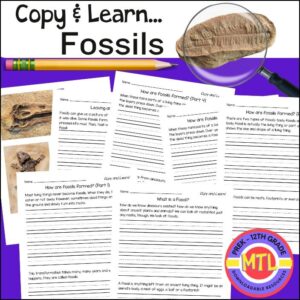 $1.75Buy Now
$1.75Buy NowThis elementary resource is designed to teach students about fossils. In this ‘Copy and Learn’ product, students will learn what fossils are made of, two types of fossils (body and trace) and how they form.
Included: 6 Copy and Learn pages and 1 fossils photo page. -
 $2.00Buy Now
$2.00Buy NowIn this resource, students will learn about living things, (plants and animals) and what they need to survive within their habitats. Students will investigate the dependence of plants on air, water, nutrients, and light. They will also learn about pollination and how many plants depend on animals for pollination and the dispersal of seeds. Students will learn about various animal habitats and how some animals change with the seasons.
This resource includes both student and teacher materials.
Number of Lessons – Depending on how you divide up and teach lesson segments, there will be 12 to 20 lessons of 30-45 minutes each. Science video links are included in the teacher materials.
-
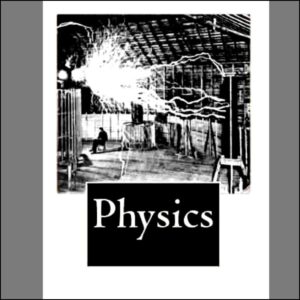 $5.00Buy Now
$5.00Buy NowThis Physics textbook was written in 1920 and will help students gain a solid understanding of the subject matter. It is 436 page .pdf and includes valuable illustrations that will aid in student understanding. There are no test or answer keys, however each chapter will ask important questions and includes a review outline. Because there are no answer keys, it is suggested that students keep a physics science notebook. Within that notebook, they are to
– write out the exercises
– write their answers
– highlight their answers/or text that helped them develop their answers within the textbook
– notate by their answers the page number(s) of highlighted sectionsPreview a small selection of this resource here.
See description below for further details
-
 $5.50Buy Now
$5.50Buy NowIn this extended, interactive unit, students will learn all about scientists, what they do, the tools they use and science safety.
This is a LARGE unit. See description below for all that is included! Can be used as a notebooking unit.
-
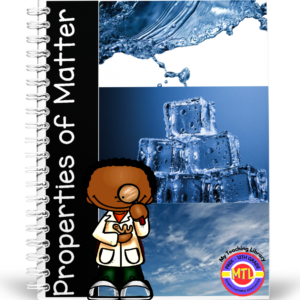 $3.00Buy Now
$3.00Buy NowAn engaging science unit teaching students about the properties of matter through hands-on and thought-provoking activities!
- Lesson 1: Matter (Define)
- Lesson 2: Solid, Liquid, Gas
- Lesson 3: Liquid Experiment
- Lesson 4: Solid Experiment
- Lesson 5: Gas Experiment
- Lesson 6: Liquid to Solid
- Lesson 7: Liquid to Gas
- Lesson 8: Irreversible Change
- Lesson 9: Reversible Change
- Lesson 10: Disassemble Change
-
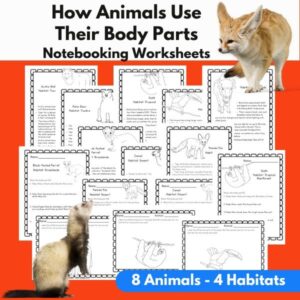 $3.00Buy Now
$3.00Buy NowIn this unit study, students will learn how 8 different animals (4 different habitats) use many of their body parts to live and survive. For each animal, students will be given a fact sheet, a short answer worksheet and a worksheet on which they will label and describe the specific body parts and how they are used.
Animals covered in this unit are:
– Desert Habitat: Camel, Fennec Fox
– Grasslands: Black-footed Ferret, Bison
– Tropical Rainforest: Sloth, Toucan
– Tundra: Polar Bear, Arctic Wolf -
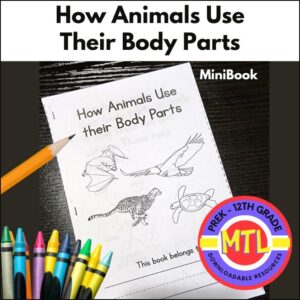 $2.50Buy Now
$2.50Buy NowA fun to create, Science mini-book teaching students how different animals use their body parts as tools to live and survive! Once students finish creating this 10 page mini-book, they will be able to give examples of how 7 animals use their body parts to get nourished, move within its environment and even stay protected from predators!
Animals included in this project are the cheetah, bat, loggerhead turtle, badger, kangaroo, deer and tundra swan. There is also a image of a wolf with showing various body parts often used to accomplish an animal’s survival.
Students will color, draw and write to complete the book.
-
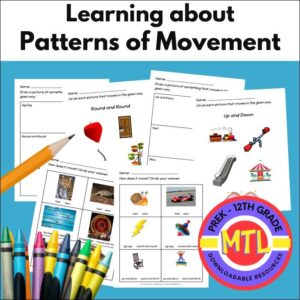 $1.50Buy Now
$1.50Buy NowLearning about various patterns of movement is an important Kindergarten and 1st grade Science concept that is introduced in these worksheets! The movements covered include:
– fast / slow
– ziz zag
– round and round
– straight line
– up and down
– back and forth -
 $2.25Buy Now
$2.25Buy NowHere is a set of 36 science classification cards to give students the ability to classify living and nonliving things! These cards include beautiful color photos of 36 different items plus two sets of classification mats.
-
 $2.25Buy Now
$2.25Buy NowThis living vs. nonliving booklet is perfect for kindergarten and 1st grade students just learning the science concept. It includes a cover page and 5 inside pages that will teach students that living things grow, need food and water as well as reproduce.
-
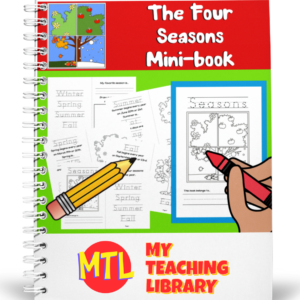 $2.50Buy Now
$2.50Buy NowStudents will learn about the four seasons, (winter, spring, summer and fall) while creating a cherished 12 page science mini-book! For each season, students will learn when that season begins and a fact about it.
Example: For spring, students will learn that spring begins every year on March 19th or 20th and that spring is warm and flowers begin to grow. Whey will be coloring, as well as tracing words and pictures! (Some seasons have more than one date when it may begin, as you see in the spring example. This allows this resource to be used every year and can be a springboard to a discussion as to why this is true if appropriate.)
-
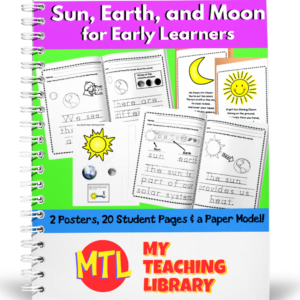 $3.00Buy Now
$3.00Buy NowThis unit is designed to help early learners learn about the sun, earth and moon through fun, engaging activities! Students will learn that the sun supplies heat and light to the earth, that the moon reflects light from the sun and rotates around the earth, that there are different phases of the moon (specifically in this unit: full, half and crescent), and more! Includes:
– 2 posters
– 20 student pages
– 1 interactive model craft -
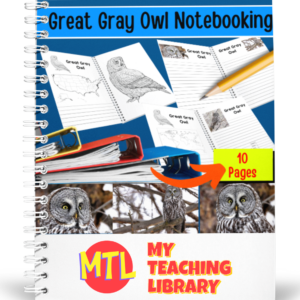 $3.00Buy Now
$3.00Buy NowThis Great Gray Owl resource includes ten pages perfect for any student creating a report or project on this bird! There are nine pages that can be used to record findings such as its scientific classification, range, habitat, diet and much more. The last page includes a full black and white illustration so that students can create a colorful picture of this magnificent owl.
Students can use a variety of resources to learn about the owl or they can go to “The Great Gray Owl“.
-
 $6.00Buy Now
$6.00Buy NowBiology – Unit 7 is designed for high school students and focuses on global health, diseases, pathogens, viruses and more.
Lesson 1: Health Issues Throughout the World
Lesson 2: Types of Diseases
Lesson 3: Noninfectious vs Infectious Diseases
Lesson 4: Autoimmune Diseases and Hypersensitivity
Lesson 5: What is a Pathogen?
Lesson 6: Disease Control & Prevention
Lesson 7: The Study of Viruses
Lesson 8: The Human Immune System
Lesson 9: Vaccination & Immunotherapy
Lesson 10: Germ TheoryEach lesson includes written informational text and is followed by student questions and/or worksheets plus a unit test. Answer keys and optional assignments list is also included.

